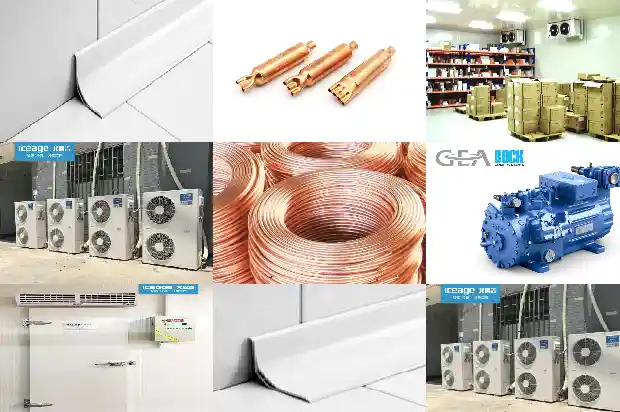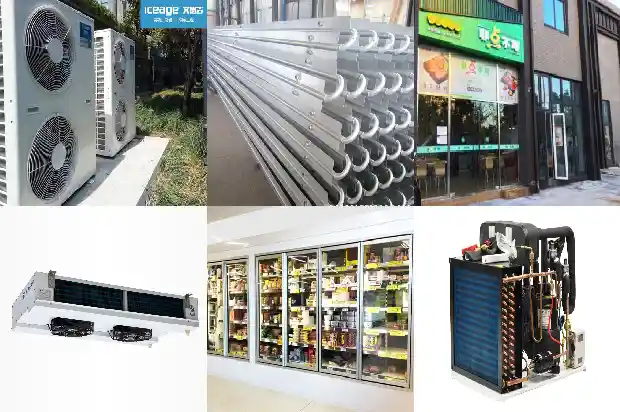Analysis of 6 Components in Air - cooled Multi - split Systems
2025-01-02
01 Analysis of the Advantages and Disadvantages of Multi - connected Air - conditioners
Advantages
- There are fewer outdoor units, which does not affect the appearance of the building.
- The construction cost is lower than that of water - cooled units, and the operating cost is relatively low.

- The control is flexible. Some individual brands can even achieve remote control via telephone and modem.
- The noise level is low, and the operation is quiet.
- The installation is simple. Three - phase power supply is not required, and the construction period is short.
Disadvantages
- There are limitations on the length of the refrigerant pipe and the height difference between the indoor and outdoor units, making it not suitable for rooms with a large depth.
- The external static pressure of the unit is small, and the air supply distance is short.
- The cooling (heating) capacity of a single unit is limited and cannot meet the air - conditioning requirements of larger rooms.
- Generally, each indoor unit requires a set of control circuits. The wiring is complicated and prone to malfunctions.
02 Analysis of Components of Multi - connected Air - conditioners
- Compressor (1) The heart of the refrigeration system. It sucks in low - temperature and low - pressure gaseous refrigerant and discharges high - temperature and high - pressure gaseous refrigerant. The compressor is the power source of the refrigeration system.
- Compressor Heating Belt (2) It raises the temperature of the compressor, volatilizes the liquid refrigerant inside into gas, and avoids liquid hammering of the compressor. Generally, this heating belt comes into play when the unit is powered on for the first time after installation or when it has not been turned on for a long time in winter.
- Compressor Discharge Temperature Sensing Bulb (3) It detects the discharge temperature of the compressor to prevent the discharge temperature of the compressor from exceeding the set temperature, so as to control and protect the compressor.
- High - pressure Switch (4) When the discharge pressure of the compressor exceeds the action value of the high - pressure switch, it immediately feeds back a signal to stop the operation of the whole unit, achieving the purpose of protecting the compressor.
- Oil Separator (5) It separates the lubricating oil from the high - pressure steam discharged by the refrigeration compressor. At this time, the refrigerant and oil in the system are separated by the oil separator to prevent a large amount of refrigeration oil from entering the refrigeration system and the compressor from running out of oil.
Meanwhile, through separation, the heat transfer effect in the condenser and evaporator is improved.
- Oil Equalizer (6) The function of the oil equalizer is to “balance the oil level between different parts of the air - conditioning system” to prevent oil shortage in some parts.
Related Articles
- Analysis of Seven Reasons for Ice Formation in Computer Room Air Conditioners
- Analysis and Troubleshooting of Common Faults in Air - source Heat Pumps
- Analysis of Advantages, Disadvantages and 34 Common Components of Multi - split Air Conditioners
- Common Causes and Analysis of High and Low Pressure Alarms
- Common Causes and Analysis of Compressor Thermal Protection
- Analysis of Common Faults in Compressor Overcurrent and Burnout
- Analysis of Causes for Safety Valve Leakage
- Analysis of Refrigeration Compressor Motor Faults
- Fault Analysis of Working Principle of Screw Chiller Unit
- Analysis and Treatment of Common Low-Pressure Faults in Chillers
- Analysis and Treatment of Common Low Pressure Faults in Chillers
- Water Cooled Unit Principle of Operation and Parameter Failure Analysis
- Principles, Components and Heat Recovery of Modular Units
- Basic Knowledge of Valve - type Components in Refrigeration Systems (Technical Sharing)
- Are you familiar with the detection and maintenance methods of air conditioner components?
- Top Ten Components of Refrigeration Systems and Five Common Troubleshooting!
- Refrigeration System Circulation and Components for Freezing and Cold Storage
- Principles of Refrigeration Systems and Functions of Components Explained
